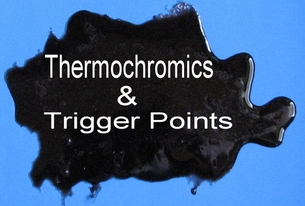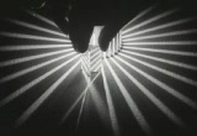
Thermochromic materials are those chemicals that exhibit a color change with temperature. The two best known methods of temperature induced color change involve either liquid crystals or leuco dyes. And, although there are inorganic compounds like titanium dioxide and zinc oxide that show color change with high heat, they fail to be useful as consumer products. A good example of liquid crystal color change is in the “mood ring” which was popular in the 1970’s and is still sold today. These rings are based on cholesteric liquid crystals that change color in the range of temperatures found in the human body. When I was actively involved in chemistry I was able to develop a method of detecting breast cancer with these materials. The technology was based on the fact that cancer cell colonies are warmer than the surrounding tissue and could be seen as hot spots. But, mammography was being developed that was much better than my crude approach.
But, the chemical reactions in this video are based on leuco dyes. These are chemicals that have two distinct color phases. The color change can be triggered by pH, solvent action, or other chemical mechanism. A good example is that of crystal violet lactone, a leuco dye. If it is blended in a microcapsule with dodeconal, a solid alcohol with a low melting point, the alcohol will liquefy, protonate the lactone causing a change in pH, and that will result in a color shift. However, this is a bit of a misnomer as color change due to pH is actually called halochromism! But convention and culture continues to call it thermochromism. The advantage of these chemicals is that a wide range of temperatures can be fabricated with this technology. The two that are demonstrated in the video are triggered at 86 Fahrenheit. I bought these at Solar Color Dust but there are a number of suppliers that can be located by searching “thermochromic pigments”. They are a bit expensive but still interesting to work with. Enjoy…

 RSS Feed
RSS Feed
